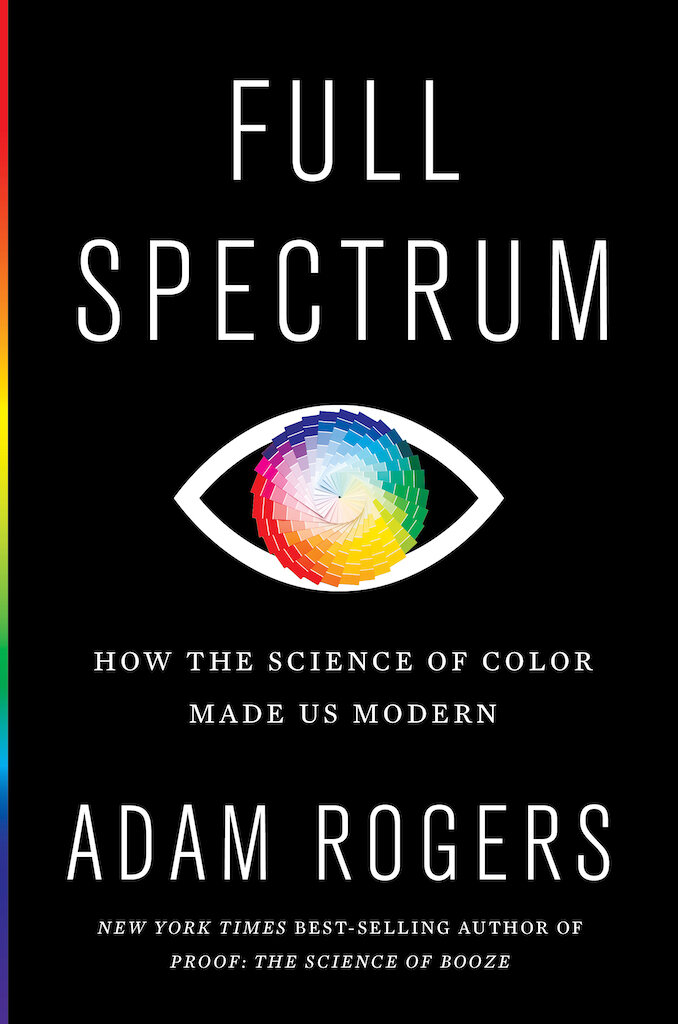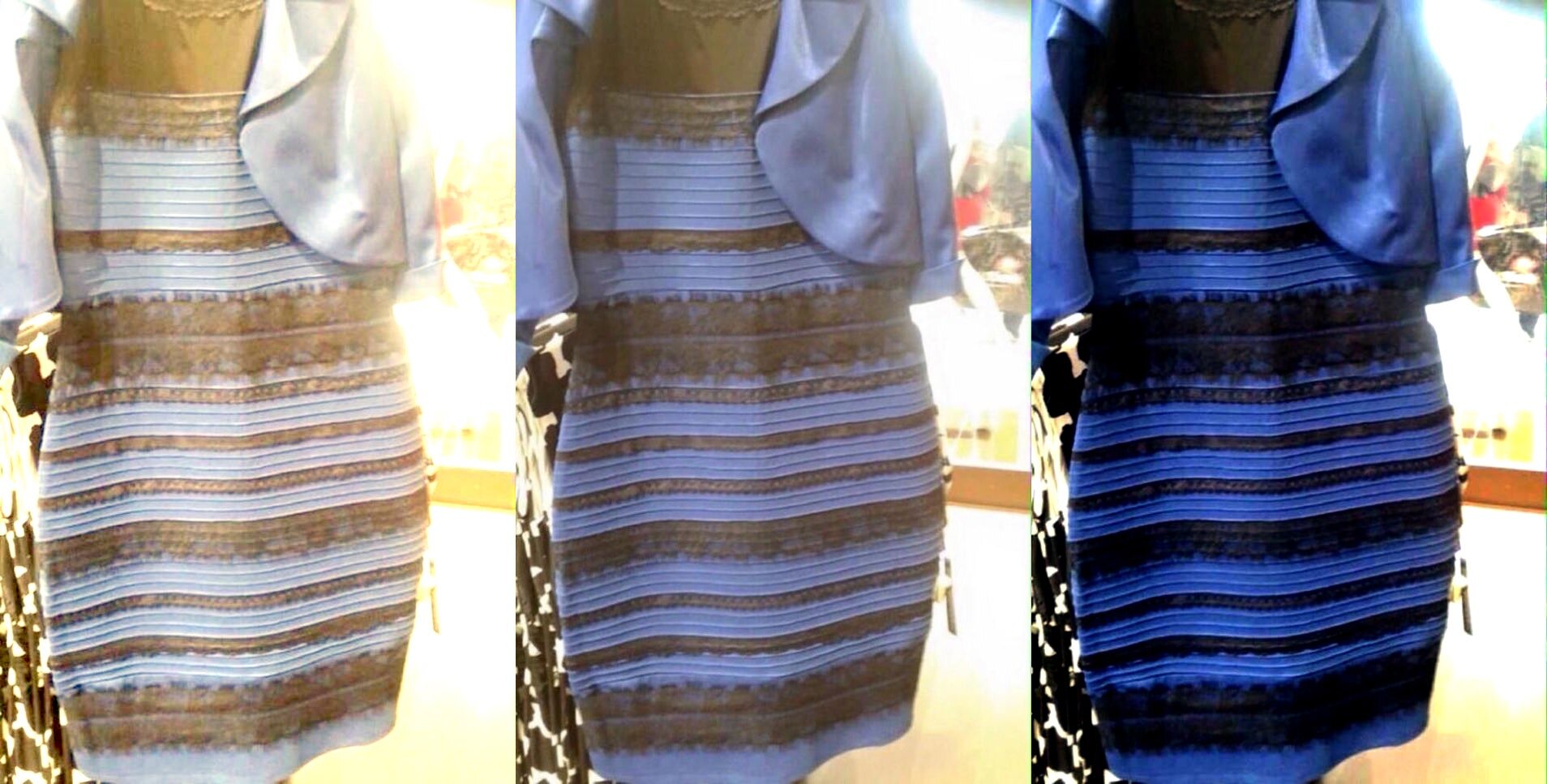A couple of months ago, my long-time internet friend Adam Rogers (Wired / Twitter) sent me a a direct message on Twitter. To paraphrase, he said “My new book just launched and I think you might like it. Can I send you a copy?”
That book was Full Spectrum (Amazon / Bookshop), and he couldn’t have been more right.
While I have a soft spot for all things related to color, Adam has a full on obsession - and has for decades. He shares that knowledge in this book, which takes the reader on a journey from the discovery of the first pigments, to the technology that is pushing the boundaries of color today.
I devoured Full Spectrum, and Adam was kind enough to answer a few questions at the front of my mind once finished. Here is our conversation via email:
Brad Dowdy: You mentioned various times in the book that this was a long time in the making. What was the final push you needed to get Full Spectrum out into the world?
Adam Rogers: I'd been interested in the color white and titanium dioxide for decades, honestly—I get these vaguely obsessive notions in my head and collect research string on all kinds of weird stuff, looking for ways to use it. I think it was the Dress, really, that made me finally see the connection, the idea that our interaction with and experience of color was a basic way our minds meet the natural world, and that there was this pendulum-swing between the human understanding of color and representation of it. One always leads to more of the other. Once I had that in my head, it was just a matter of typing. A lot of typing. So much typing.
BD: Directly from my notes, taken while reading: “I’m four chapters in and all I can think about is how much poison people put on their bodies and in their homes. No wonder life expectancy was so low for so long!” Is it really only since the late 1800’s/early 1900’s that we had a better understanding of the danger contained in products like makeup and paint?
AR: That's the craziest part! The ancient Romans understood that the lead they used to make lead white (and dishware and plumbing) was toxic. The technical usefulness of the stuff outweighed the dangers, I guess, until the Enlightenment and Industrial Revolution spread the effects out to a population. That's always the struggle. Even William Morris, the renowned designer and colorist as well as socialist champion of the working class knew full well that the arsenic-based pigments he used were toxic.
BD: Tyrian Purple is famously harvested from a specific species of sea snail, which made it hard to produce, and expensive to acquire. What is your favorite weird source of ink that you shared in the book?
AR: Fantastic question. You can probably tell that I'm compelled by the story of titanium dioxide, though I suppose white inks are less common than just using the white of the paper we're writing on (which still often has TiO2 in it). I love the red of the cochineal beetle, carmine, because it comes from squishing up a particular bug. And it overlaps with another of my obsessions, the science of booze and cocktails, because cochineal used to be the color of Campari, and a few apertivi like it still use the authentic bug juice.
BD: How important is the science of color to our understanding of the world as a whole? Before reading Full Spectrum, I had little awareness of the historic names tied into some of the major discoveries and theories. And, how those discoveries changed everything from math and science to trade and commerce. What discovery do you think pushed our understanding of color forward the most?
AR: I'm so glad you noticed what I hoped, which is that studying color and light have been the roots of much of what we consider today's critical, most basic science—relativity, quantum physics, computer vision, and so on. If I had to pick just one idea I think it'd be Thomas Young's and Hermann von Helmholtz's realization that three receptors in the eye could account for the entire range of color vision, because it linked the universe of light and the electromagnetic spectrum phenomenologically to the neuroanatomy of the eye and brain. That's the key, the way our bodies transduce signals from the world Out There into a mental version of the world In Here.
BD: Anyone who has been on the internet at all over the past decade is well aware of “the Dress.” While many of us saw this as just a meme, it sent color researchers, scientists, and even yourself, scrambling for answers. What were the main takeaways from the research done post-internet phenomenon?
AR: I think the Dress really had two main takeaways (beyond some rejiggering of slightly esoteric science). One was that the time we spend looking at pictures on screens like our phones had changed our interaction with color again—like every new technology of color does, from pigments sticking to cave walls to dyed textiles woven together and so on. And the second was that once it gets into our heads, "color" isn't an objective, pure concept at all. Different people see different things under the same conditions. It's frankly amazing we can talk to each other at all.
BD: Let’s talk Vantablack. First off, is the future of color in the lab? Is Vantablack a color, or a technology?
AR: I'm more sanguine about this than you, I think. The future of color has always been in labs; it's always been people doing science, whether they (or we) would consider them scientists or not, who advanced the technology of synthesizing colored substances we could apply to the world we make—to fabrics, surfaces, whatever. I think sometimes when we look at the history of science and technology we can be a little closed-minded about that, especially because so often in human history the world of "craft" has been the purview primarily of women (even when they were inventing pigments and the algorithmic glory of weaving) where "science" or "technology" have been what happens when men take that craft over for profit. But it was all science and innovation, right?
But I dodged your question there a little bit. Yes, I think it'll be up to the materials scientists and nanotechnologists to come up with the next great innovations in making pigments, probably using structural techniques that mimic bird feathers and insect carapaces. Nanotech like Vantablack will be there, too.
I'd definitely characterize Vantablack as a technology in that sense, rather than a "color." It's certainly black, a color no one had to invent—and as the researcher Bevil Conway told me, if you want to see an even blacker black than Vantablack all you have to do is build a light-tight box (even cardboard and duct tape will work) and cut a one-inch hole in the top. What you see in the hole will be the blackest, blackest black. It's just hard to then apply that black to a surface, for sure.
BD: Secondly, I’ve been in the Stuart Semple camp for years. Maybe it is Pollyana-ish for me to think color should belong to the people, from an art perspective at least. Surrey Nanotech certainly has enough corporate customers to sustain their business and continue their research, so what is the benefit of keeping Vantablack in one persons hands for artistic uses?
AR: My guess is that the sheer difficulty of making and applying robust Vantablack coatings to anything will limit its availability way more than any exclusivity contract. And I imagine it's just as likely that other color innovations, like YInMn blue or anthocyanin-based blues, will have their own licensing agreements, albeit maybe more widespread. 'Twas ever thus, I think—like, there's no more real quinacridone gold in the world because no one makes the pigment...even though one might argue that the replacements make the same color to the eyes of someone looking at an ink or a watercolor made to replace it. The technology gets limited distribution, but the color might not.
BD: You have decades of research into color, and Full Spectrum contains a massive index full of resources for those interested in learning more. Are there any online resources you would point readers towards to follow current and future news in this realm?
AR: Ah, this is a great question. Sarah Lowengard's History of Color in Eighteenth-Century Europe is an amazing and rewarding history, of both the people and the science that transformed how people see and make colors. As for the future, this is a little bit of a bankshot, but I like the technology- and engineering-minded newsletter The Prepared. It's not specific to color, but it's a wide-ranging look at the built environment, and when there's a color innovation, they're likely to cover it. Also I pay pretty close attention to your work for this kind of thing, so thank you!
BD: Thanks so much Adam! I genuinely enjoyed this book, and plan on continuing to share it and the stories within.
(My thanks to Adam Rogers and publisher, Clarion Mariner, for sending me this book at no charge. This post contains affiliate links.)









